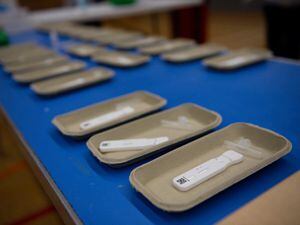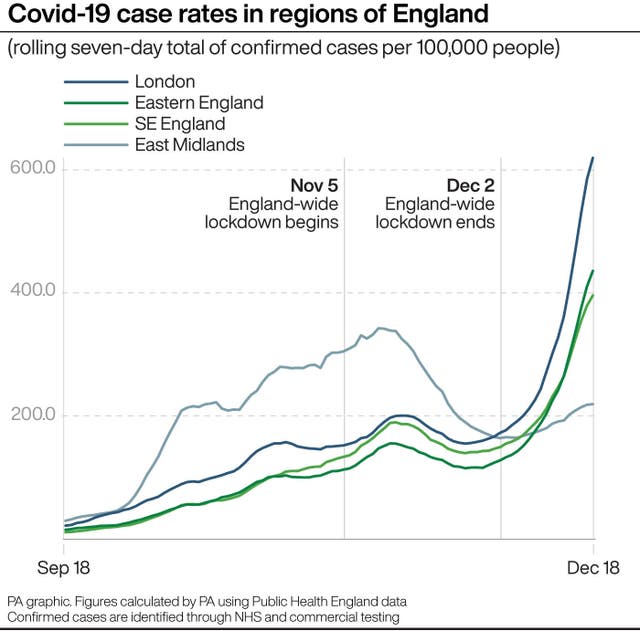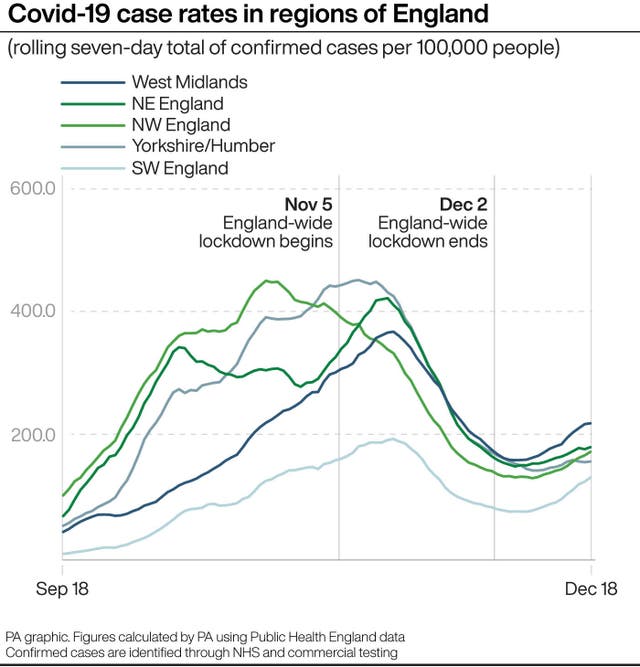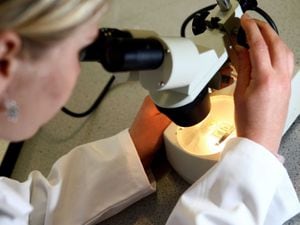Care home staff to receive rapid-result tests to protect against Covid variant
Workers will receive two lateral flow tests a week in addition to regular PCR testing.

Care home staff in England will receive two rapid-result tests a week in addition to regular testing to help keep the new coronavirus variant at bay.
Health officials have brought forward plans for care home staff to receive bi-weekly lateral flow device tests (LFDs) as concerns grow about the rapidly spreading strain.
Staff in all tiers will be given two LFDs, one mid-week, in addition to the weekly PCR tests, the Department of Health and Social Care (DHSC) said.
If a case of coronavirus is identified in a care home in a Tier 4 area, all staff members will be tested daily with LFDs for a week.
Public Health England confirmed earlier on Wednesday that LFDs can detect the new variant.

The rollout of rapid testing is being supported by a £149 million grant after care providers raised concerns about the added pressures associated with using the tests and enabling safe visits.
The National Care Forum, which represents not-for-profit providers, has previously said the Government’s infection control fund (ICF) was not sufficient to meet care homes’ virus-related costs.
The money will pay for care homes to set up safe testing areas, provide staff training and contribute towards staff time spent on administering and receiving the tests up to March.
Homes will have to use a room for tests to be undertaken, another room for people to wait half-an-hour for their results and ensure each test is registered.
It will also help care homes in tiers 1, 2 and 3 meet additional costs associated with visits, so residents can see their loved ones.
The money will be made available early next year and will be distributed via local authorities.
It was announced by Health Secretary Matt Hancock at a Downing Street Press conference on Wednesday.

The LFTs were rolled out to care homes in England to help enable close contact visits and combat isolation among residents.
Currently, these cannot take place in Tier 4 care homes but indoor visits can still go ahead with the use of other measures including screens and pods.
The Government’s position remains that in-person visits should be the norm across all tiers, unless it is unsafe because a home has an outbreak.
The DHSC cautioned that testing is only one part of keeping residents safe and said it is essential staff and visitors also wear personal protective equipment (PPE) and follow infection control measures.
The NCF said the announcement represents a tripling of the current staff testing regime and the extra funding is an “important step forward”, but is unlikely to be enough.
It also said that, despite a Government target to get LFDs to all care homes in England by December 18, some are yet to receive them.
Vic Rayner, NCF executive director, said: “It is an important acknowledgment by government of the very significant pressures that increasing the use of rapid LFD tests will bring to care homes who are already stretched to the limit with all the additional work that operating in a Covid-19 world has created.
“The government must now ensure that all care homes have their LFD tests in place as a matter of urgency, if care homes are to make the additional testing happen.”
Professor Martin Green, chief executive of Care England, added: “We hope that the money will come though as soon as possible in the new year and can dovetail with an increased rollout of a vaccine to residents and staff.”
The Government also published an evidence note concluding that it is “appropriate” to use LFDs to reduce risk in care homes, but they will not eliminate risk.
It comes as some local authorities raised concerns about the effectiveness of the tests and the number of false negative results.
Citing preliminary analysis from early November, the evidence summary says that the Innova LFD tests have an overall sensitivity of 76.8% – meaning they miss around 23% of positive coronavirus cases.
This rises to 95% for those with high viral loads – in other words those who are thought to be the most infectious.
The sensitivity of the tests dropped from 79% when used by laboratory scientists to 73% when used by trained healthcare staff, and further to 58% when used by self-trained members of the public.
This suggests training is a key factor in ensuring higher sensitivity from the LFDs.
More recent evaluation of LFD use in the community as piloted in Liverpool shows that the Innova tests failed to detect 60% of known positive coronavirus cases.
The report, published on Wednesday, shows the Innova device identified 40% of PCR positive cases when analysing a sample of 6,000 users who self-swabbed under supervision.
The authors recommend caution in how LFDs are used in vulnerable settings “where the consequences of infection are severe”, given the lower than expected sensitivity.





